My penchant for reading old newspapers and out of print books results in my occasionally accessing old tales that date back to the days Native Americans still roamed and rambled through Georgia. I have started collecting them, and at some point I would like to publish the stories in a volume with a little context to bring them into the light of the 21st century. Of course, I will attempt to keep the stories as close to the original tale as possible which means I will probably offend someone since some of the information will not be sanitized with today’s nod towards which terms are acceptable language and which are not, but I digress.
I recently ran across an interesting tale I thought I would share here regarding Adam Poole Vandiver (1787-1876) and his experience with a couple near his homestead in Habersham County. Vandiver was one of the earliest settlers in the area and is credited with being the first white man to witness the magnificence of Tallulah Falls and the general area.
Through the years he became known as “The Hunter of Tallulah” due to his well-known pelt hunts. He was also known for his hospitable nature hosting strangers who came near his wilderness cabin, his fierce friendship with Chief Gray Eagle, the last Cherokee chief in the Tallulah area, and for telling tall tales.

During the time when the region around Tallulah Falls was still inhabited by Native Americans, they lived a partly civilized life tending little patches of their own and hiring by the day to the pale face, the pioneers of that section. For some natives, however, the savage instinct was still dominant in their breasts, and it was quite common for them to commit depredations against the settlers.
Yes, that romantic country is rich in thrilling adventures, and at one time you could find many old people who lived in the area with the Indians who could point out the scenes of enough bloody deeds to stock a blue-brick library. And, for some, there is no doubt, either, about the truth of these adventures, for as we before said the parties who witnessed them were at one time alive to testify, and with a view of preserving the rude history of their section have marked these spots so that in after years they can be pointed out to the curious.
At the time of which I write a farmer named Adam Poole Vandiver had a large clearing near the falls and was the most prosperous planter in that section. Labor being scarce, he employed a number of Indians to do his work, and they proved very successful hands.
About the time our story opens a stalwart young buck, bringing with him a beautiful white woman, appeared and asked for work. The woman seemed to live in constant fear of her companion and positively refused to divulge her story, simply saying that the man was her husband, and she did not wish to leave him.
It was in those days not an uncommon thing to see a white man married to a squaw and even Indians with white wives. There was not much law, and it was the general rule for every man to attend to his own business and let his neighbors alone. So, Vandiver, being at that time in pressing need of hands, hired the man and woman without question; but the former proved to be a thriftless vagabond, who spent more time in the woods than on the farm. He seemed to live in constant dread of attack, and always went armed. At the slightest noise he would look around frightened, his hand grasping the gun upon his shoulders. The ill-mated couple continued to hang around the farm a week or so, the man shamefully abusing the woman, who accepted it with the greatest meekness.
The Indian was evidently a brute, and the woman his helpless slave.
But one day a strange white man, armed to the teeth as it were, rode up to Vandiver’s and inquired if he had seen an Indian and a white woman pass that way, describing the strange couple. He was informed that they had not more than an hour ago walked out together, going in the direction of Tallulah Falls. Without deigning a single word of reply the stranger started in the direction designated, going at a swinging trot.
Expecting a tragedy of some kind, several parties followed the man at a distance, but he was soon lost in the woods from view. But they continued on, and when about two miles from the Grand Chasm heard the sharp report of a rifle just ahead. Rushing to the spot they found the Indian stretched dead upon the ground, the well-directed ball having passed clear through his body and penetrated the breast of the woman behind him. The stranger was unconcernedly leaning upon his gun, and the wounded woman.
After some time the following thrilling story was elected from the man. He came from the western part of the state, and the woman before them was his wife. They lived happily in their frontier home, and were blessed with two lovely children, one a babe at her mother’s breast and the other scarcely large enough to walk.
There were many Indians in his settlement, but he lived on terms of peace and friendship with them. Among the tribe was a medicine man who claimed by certain incantations and spells to dispel disease and work many wonders. He was held in great reverence and awe by his race, and even some of the more ignorant whites looked upon him with fear. As it was necessary for the settlers to keep on good terms with the Indians, who largely outnumbered them, the stranger, whom we will call Jenkins, invited the medicine man to his cabin and treated him with great honor. As soon as the eye of the Indian rested upon the lovely face of the young wife his eye sparkled with fiendish delight and followed her wherever she went.
The husband felt flattered at this mark of appreciation, but the poor woman burst into tears as soon as the savages left and begged her husband not to bring him again to the house. She said while the Indian was looking at her she felt a thrill of horror creep over her system and for her life she could not remove her eye from his basilisk gaze. The wife said she had a presentment that the Indian would bring trouble into the family.
Jenkins laughed at her fears, and the Indian continued to pay daily visits, although he never spoke to the wife, sitting for hours watching her at work without opening his lips. Whenever he left, the poor woman had hysterical spells and continued to beseech her husband to move away, or hide her from his red visitor. Things went on this way for several months, when one day the husband returned from a trading expedition to a distant town and found his wife gone and her two little babes nearly famished in the house. The horrible truth then dawned upon him; the medicine man had charmed his wife away. His suspicions were confirmed when he learned from the neighbors that the couple had been seen walking through the woods together.
Without hesitation he placed the deserted babes in charge of a kind neighbor and went in pursuit of the seducer and his wife. Being a hunter he tracked them for more than a hundred miles through the wilderness, and found them as described. He said he heard voices ahead and soon saw his wife pleading with the Indian, who was abusing her. His blood was on fire, and stepping behind a tree he took deliberate aim at the heart of the Indian, his bullet penetrating the body as described and actually entering the breast of the woman, but inflicted only a slight wound.
The woman seemed in great agony and falling at the feet of her husband begged him to spare her. She said that she loathed the Indian, but he had charmed her so that she had to do whatever he wanted.
She had mechanically taken her bonnet and followed. She was miserable and knew her little children were at home crying for her and starving; but she was as helpless as an infant. She followed the Indian for days over rivers and mountains and through the trackless forest. He beat and abused her when she became weary, but she had no power of resistance.
She knew he intended to kill her, and had the night before threatened to throw her over the falls, and she believed he was taking her there for that purpose when the husband came to her rescue. She also knew that by complaining to Vandiver she would be released from a life that was worse than death; but her tongue refused to speak except at the bidding of her master. She saw and recognized her husband when he stepped behind a tree and felt that deliverance was at hand. She heard the familiar crack of his rifle, felt a sharp pang in her breast and then saw the Indian spring for five feet up and fall dead at the foot of a pine. It was then that the spell left her and she felt again free; and concluded by begging her husband to carry her home to her little children.
The couple left, refusing the hospitality of the kind neighbors. They were never afterwards seen or heard from.
The Indian was buried at the foot of the pine where he fell, the tree notched so as to mark the spot, and rocks placed at the head and foot. The spot is not quite two miles from the falls. Years later the Northeastern Railroad known later as the Tallulah Falls Railroad would pass between these two trees, and it is said the mound of the grave could be seen from the cars. In fact, the spot is near where the rail cars stopped for passengers to take hacks. Sight seekers could at one time easily walk to the grave while baggage was transferred.
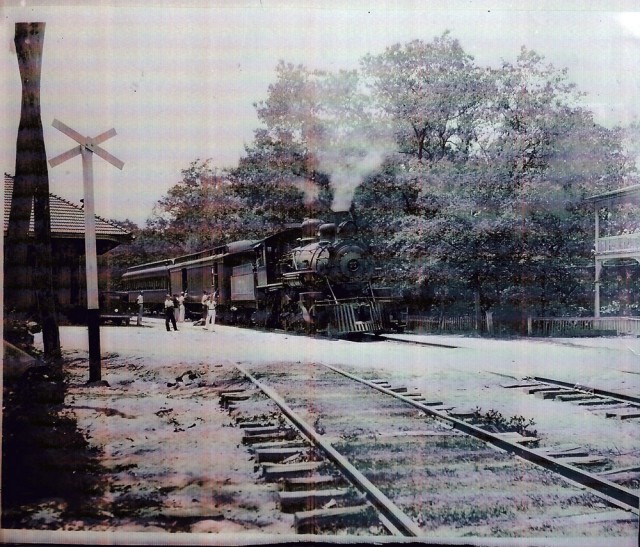
Then as today the spot along the rails is known as Dead Man’s Gap identified as such as a “reputed Indian grave which according to the story, it was the grave of an Indian who was killed there while eloping with a white woman, whom he had stolen from her husband.”
In the early 1880s it is said the mounding of the grave had nearly been obliterated by time. I would guess by now, its presence is most certainly gone, but for many years those living around the Falls who helped bury the Indian delighted in telling the story of the “charmed woman”.
Did the events involving the native medicine man and the so called Jenkins couple actually happen or was this just another of Adam Poole Vandiver’s tall tales regarding the Tallulah Falls area?
At this point the only witnesses still around are the falls and the forest, and they aren’t talking unless you know how to listen.
If you enjoyed this true history tale you will like my latest book – Georgia on My Mind: True Tales from Around the State which contains 30 true tales from all around the state including three stories from Atlanta, and yes, there will be volume two out soon! You can purchase the book here…in print and Kindle versions.
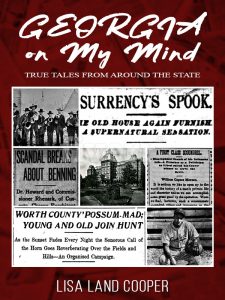
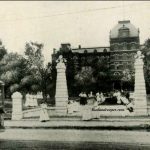
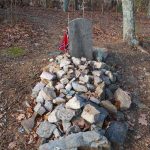
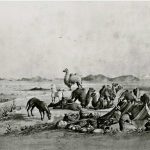
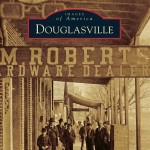
I really enjoyed reading this, thanks!
enjoyed the story ilive in Habersham County near Tallulah f\Falls and have read several stories of Indians in this area. I have read Jimmy Cherokee Waters. thank you for sharing